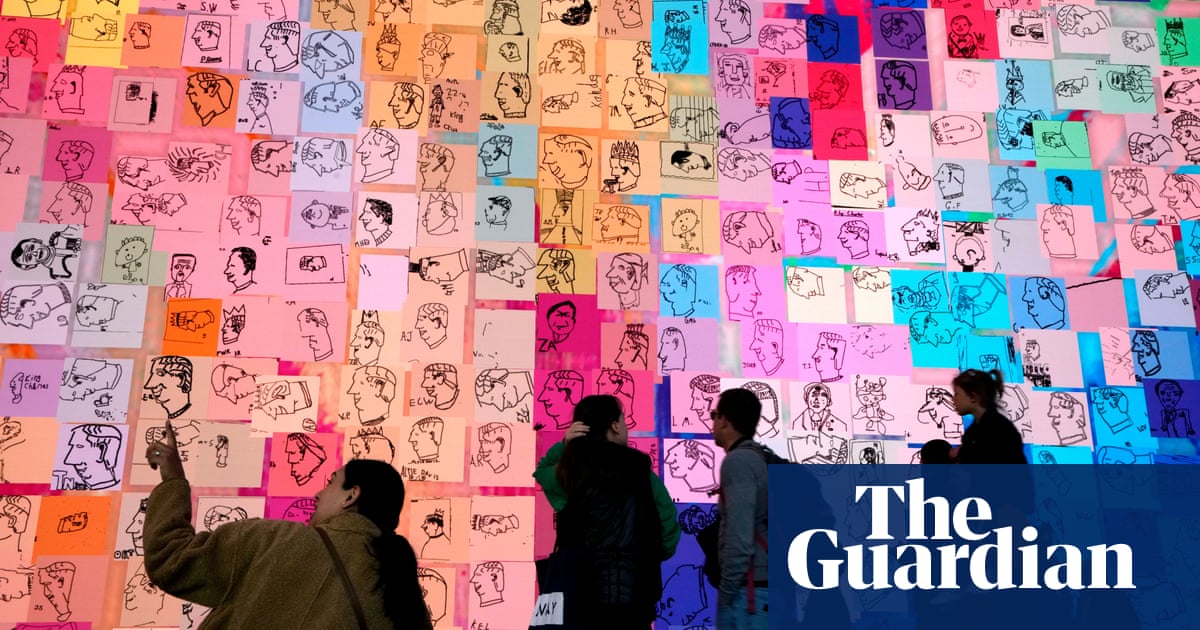
Empty buildings left by the decline and demise of high street giants such as Marks & Spencer and Debenhams mean councils have had to think creatively to bring life back to town and city centres. Some have sold sites off, others envision the properties being reused as spaces for new industries, while a few have demolished them.
For one artist, large-scale immersive art – the type that is beamed out on giant LED screens – could be a way to rejuvenate the UK’s high streets while giving shoppers exposure to digital paintings that could act as an entry point into other forms of culture.
Es Devlin, a former theatre set designer who now works on immersive sets for U2, Beyoncé and Adele, has called for defunct department stores in city centres to become places where visitors could enjoy art as well as commerce.
“Imagine if some of those buildings were to become an art building where people could gather not necessarily to acquire but they could engage their curiosity,” she said. “Imagine if those two things could coexist? I think would be worthwhile.”
The designer also wants artists to have more access to the huge LED screens that are dotted around towns and cities, which are primarily used for advertising, saying they could be “reclaimed” for the public as art installations.
“Every bit of what would have been common land is populated by huge rectangular screens selling us things,” said Devlin, who has been called “the Willy Wonka of design” for her visually stunning sets.
“We’ve come to accept that this is normal and is OK – that’s the thing we should draw into question. If we’re trying to reclaim these spaces with works of art that instead of trying to sell us something invite an ignition of our curiosity, that would be a better status quo.”
The artist believes that projects such as Circa, which beams artwork by the likes of Frank Bowling and Ai Weiwei on to billboards around the world, and Midnight Moment, which has done the same in New York’s Times Square, show how successful large-scale digital public art can be.
Devlin’s intervention comes at a time when immersive art has reached a new milestone. Last month, Outernet, the multimillion-pound shopping complex opposite Tottenham Court Road tube station in London that boasts huge 8K-resolution screens, said it had received 6.25 million visitors since it opened in November 2022.
Some are suggesting the visitor figures indicate that the visual art world is at a tipping point where traditional museums and galleries will have to begin involving immersive art in their offering or risk becoming irrelevant. “For many museums it is a question of when, not if, they engage,” was how the Art Newspaper described the dynamic.
British institutions have embraced immersive work before: Yayoi Kusama’s Infinity Mirror Rooms at Tate Modern was repeatedly extended because of its sellout popularity. Devlin believes immersive works such as Kusama’s can act as a portal bringing in new audiences. “If you saw Kusama on your social media feed and came to the Tate Modern to see her work, you could come out of the other side and see a Joseph Beuys and be curious,” she said.
But immersive art can be incredibly divisive, especially when established arts institutions embrace it. Last year, New York magazine’s senior art critic Jerry Saltz got into an online squabble with the AI artist Refik Anadol after describing Unsupervised, Anadol’s 24ft (7.3-metre) screen-based work that was shown at the Museum of Modern Art in New York, as “a massive techno lava lamp” and “a half-million-dollar screensaver”.
And the march of immersive art has hit other hurdles. The Sphere, the huge ball in the Las Vegas desert on to which Devlin projected work as part of U2’s inaugural concert there, will not be opening a London venue in Stratford after it hit planning problems.












